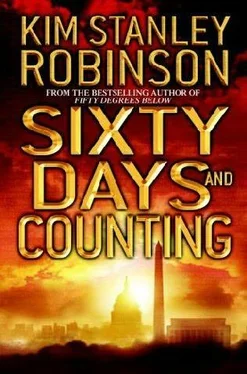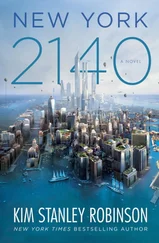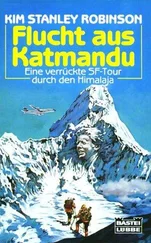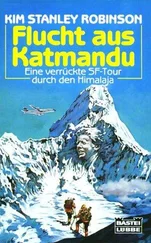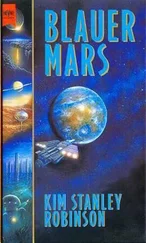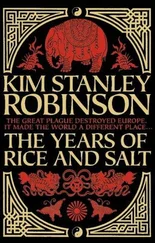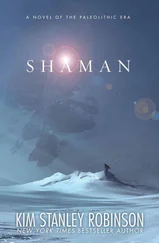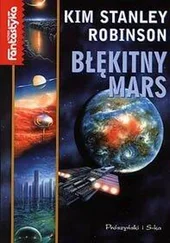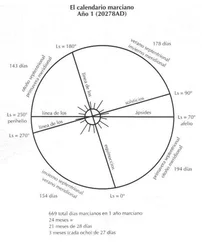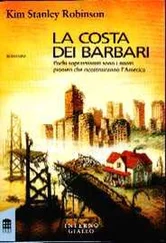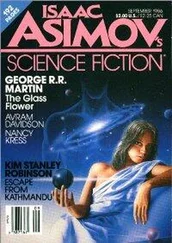And yet there were ongoing matters to attend to, new things to try. The springtime reports from Siberia indicated that the altered lichens the Russians had released the previous summer were continuing to grow faster than predicted. “Like pond scum,” as one of the Russian scientists reported. This was very unlike the pace of growth and dispersion for ordinary lichens, and seemed to confirm the suggestion that the bioengineered version was behaving more like an algae or a fungus than like the symbiosis of the two typically did. That was interesting, perhaps ominous; Kenzo thought it could cause a major carbon drawdown from the atmosphere if it continued. “Unless it kills the whole Siberian forest, and then who knows? Maybe instead of gray goo, we die by green goo, eh?”
“Please, Kenzo.”
On other fronts the news was just as ambiguous. Vicious infighting at the Department of Energy, the nuclear folks still doing their best to forestall the alternatives crowd; Diane was trying to convince the president to order Energy to develop clean energy ASAP—first finding bridge technologies, moving away from what they had now while still using it—then the next real thing, the next iteration on the way to a completely sustainable technology. Diane thought it would take two or three major iterations. Lots of federal agencies would have to be entrained to this effort, of course, but DOE was crucial, given that energy was at the heart of their problem. But all this would depend on who Phil appointed to be the new Energy Secretary. If that person were on board with the program, off they would all go; if opposed, more war of the agencies. One could only hope that Phil would not tie down his people in such a self-defeating way. But campaign debts were owed, and Big Oil had a lot of people still in positions of great power. And Phil had not yet appointed his Energy Secretary.
After a meeting running over the list of possible candidates for this crucial cabinet position, Diane came by Frank’s new office, which had no living-room feel whatsoever—in fact it looked like he had been condemned to clerk in some bureaucratic hell, right next to Bob Cratchit or Bartelby the Scrivener.
Even Diane seemed to notice this, to the point of saying “It’s a pretty weird old facility.”
“Yes. I don’t think I’ll ever like it like I did NSF.”
“That turned out pretty well, in terms of the building. Although that too was a political exile.”
“So Anna told me.”
“Want to go out and hunt for a new coffee place?”
“Sure.”
Frank got his windbreaker from its hook and they left the building and then the compound. Just south of the White House was the Ellipse, and then the Washington Monument, towering over the scene like an enormous sundial on an English lawn. The buildings around the White House included the Treasury, the World Bank, and any number of other massive white buildings, filling the blocks so that every street was as if walled. These big expanses of granite and concrete and marble were very bad in human terms; even Arlington was better.
But there were many coffee shops and delis tucked into the ground floor spaces, and so the two of them hiked around in an oblong pattern, looking at the possibilities and chatting. Nothing looked appealing, and finally Diane suggested one of the little National Park tourist kiosks out on the Mall itself. They were already east of the White House, and when they came out on the great open expanse into the low sun they could see much of official Washington, with the Capitol and the Washington Monument towering over everything else. That was the dominant impression Frank had of downtown at this point; the feel of it was determined principally by the height limit, which held all private buildings to a maximum of twelve stories, well under the height of the Washington Monument. The downtown was as if sheered off by a knife at that height, an unusual sight in a modern city, giving it a strangely nineteenth-century look, as for instance Paris right before the arrival of the Eiffel Tower. Once away from the federal district, this invisible ceiling gave things a more human scale than the skyscraper downtowns of other cities, and Frank liked that quality, even though the result was squat or unwieldy.
Diane nodded as he tried to express these mixed feelings. She pointed out the lion statues surrounding Ulysses S. Grant in front of the Capitol: “See, they’re Disney lions!”
“Like the ones on the Connecticut Avenue bridge.”
“I wonder which came first, Disney or these guys?”
“These must have, right?”
“I don’t know. Disney lions have looked the same at least since Dumbo .”
“Maybe Disney came here and saw these.”
Within a week or so they had worked up a new traditional walk together. One afternoon as they drank their coffee, Diane suggested they return to work by way of a pass through the National Gallery annex; and there they found a Frederic Church exhibit. “Hey!” Frank said, and then had to lie a little bit, explaining that he had learned about Church on Mount Desert Island, long ago. As they walked through he remembered his intense time on the island, which he now saw through the eyes of the painter who had invented rusticating. His paintings were superb, far better than Bierstadt or Homer or any other American landscape artist Frank had ever seen. Church had been able to put an almost photorealist technique in the service of a Transcendentalist eye; it was the visionary, sacred landscape of Emerson and Thoreau, right there on the walls of the National Gallery. “My God,” Frank said more than once. This was also the time of Darwin and Humboldt; indeed the wall-sized “Heart of the Andes,” fifteen feet high and twenty wide, stood there like some stupendous PowerPoint slide illustrating all of natural selection at once, both data and theory.
“My—God.”
“It’s like the IMAX movie of its time,” Diane said.
In the rooms beyond they saw Church travel and grow old, and become almost hallucinogenic in his coloring, like Galen Rowell after he discovered Fujichrome. These were the best landscape paintings Frank had ever seen. A giant close-up of the water leaping off the lip of Niagara Falls; the Parthenon at sunset; waves striking the Maine coast; every scene leaped off the wall, and Frank goggled at them. Diane laughed at him, but he could not restrain himself. How had he never been exposed to such an artist as this? What was American education anyway, that they could all grow up and not be steeped in Emerson and Thoreau and Audubon and Church? It was like inheriting billions and then forgetting it.
Then Diane put her hand to his arm and directed him out of the gallery and back toward their new office. Back into the blackened old building, if not arm in arm, then shoulder to shoulder.
Their meeting that evening had to do with the latest from Antarctica, compiled by NSF’s Antarctic division from the austral summer just past.
Much of the research had been devoted to trying to determine how much of the West Antarctic Ice Sheet might come off, and how fast it would happen. The abstract of the summary made it clear that the several big ice streams that ran like immense glaciers through more stationary parts of the ice sheet had accelerated yet again, beyond even the earlier two accelerations documented in previous decades. The first acceleration had followed the rapid detachment of the two big floating ice shelves, the Ross and the Weddell. Their absence had destabilized the grounding line of the WAIS, which rested on land that was a bit below sea level, and so was susceptible at the edges to the lifting of tides and tearing of currents. As the ice margins tore away and followed the ice shelves out to sea, that exposed more grounded ice to the same tides and currents.
Читать дальше
Конец ознакомительного отрывка
Купить книгу
